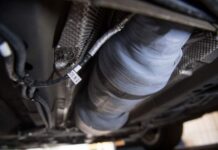Italian engineers have solved engineering methods to create self-supporting stone domes of the Renaissance. The results described in the journal Engineering Structures.
Researchers from the University of Bergamo has analyzed the technique of masonry octagonal domes of Italian churches, such as Santa Maria del Fiore in Florence, built without the use of supports or other items of load-bearing frames.
This is the first such study, which illustrates the physical design calculations and quantitative terms explain the forces that allow you to build such huge structures without formwork, is normally required even with current technology.
Before that it was known only that the entire burden falls on the dome wall of the main building, but it is unclear how it was possible to build a dome without the use of temporary structures that hold it in during construction.
Detailed computer analysis that takes into account the action of all forces with the granularity of individual bricks, allowed to explain, due to what was achieved at equilibrium. The researchers used the so-called technique of discrete element modeling, which allows to analyze the structure erected at all construction stages. With such a method it is possible not only to calculate the mechanical properties of the finished structure and to determine the limit equilibrium state and stability of the completed structures, but to recreate the technology of construction.
The dome of the Cathedral Santa Maria del Fiore was built in the XV century by the Italian architect of the Renaissance, Filippo Brunelleschi. During the construction of the dome was first used a peculiar technique of masonry, in which the role of the frame, ensuring the rigidity, played diamonds from stacked "herringbone" vertical bricks. The space inside the diamonds were laid in horizontal rows, so-called field of bricks.
Each number played the role of flat arches, or plates, the ultimate elements of which rested against the end stops in the form of horizontal bricks of the diamonds and actually distributes load throughout the structure.
The authors showed that the resistance of the plates to prevent slipping of rows of bricks during construction and collapse of masonry domes. But the most interesting that the number of rhombuses in the dome of Santa Maria del Fiore and the later cathedrals of the XVI century are not horizontal, but spiral, rising to the top of the dome in the form of a line, called a rhumb line. In this figure the masonry strength of the structure is not due to the cement that binds together the bricks and placing the bricks themselves.
Scientists believe that the use of such technology will allow for the construction of dome-shaped structures made of bricks, not only without the rustthief, but without human intervention, with the help of robotic drones delivering the material to the place of installation. This method, according to the researchers, is not only the most safe and cheapest but also the most environmentally friendly.
"the Construction industry is one of the most wasteful — are in the press release words of the head of research Sigrid Adriaenssens (SigridAdriaenssens), Professor of civil and environmental engineering at Princeton University. — So if we don’t change technology, construction waste is more and more".











































